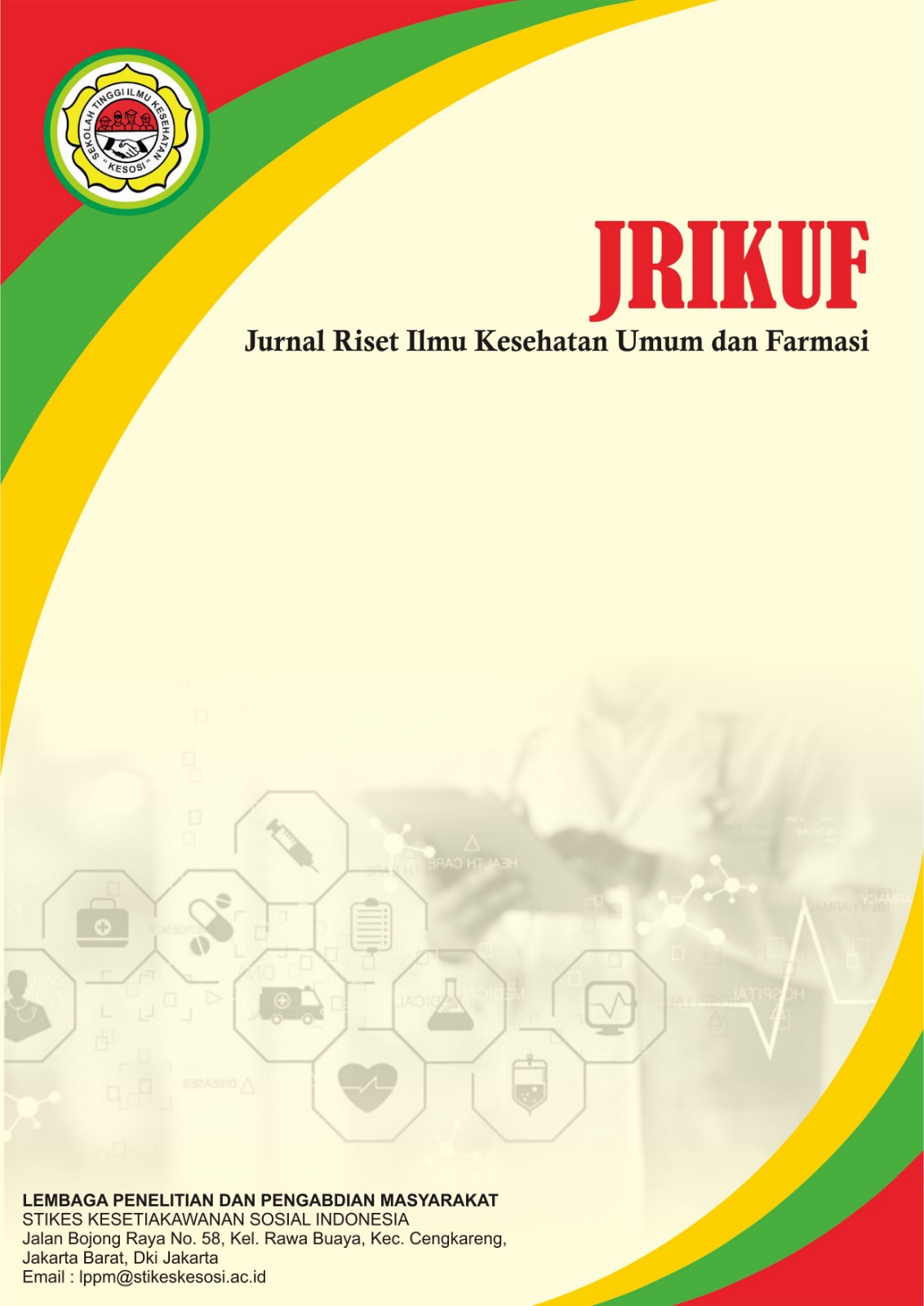Analisis Kompaaratif Stabilitas Kimia dan Fisika Paracetamol pada Sediaan Padat dan Cair
DOI:
https://doi.org/10.57213/jrikuf.v3i3.773Keywords:
Formulation, Paracetamol, Long term stability, Tablet, SyrupAbstract
Paracetamol is one of the most widely used analgesic-antipyretic drugs and is available in various formulations, including solid tablets and liquid syrups, which differ significantly in long-term stability. This review analyzes data from ten journal studies (2013–2024) comparing the stability of paracetamol in different dosage forms. A literature review method was employed to assess physical and chemical stability under various storage conditions. Solid dosage forms, such as tablets, generally exhibit excellent long-term stability. When stored in sealed packaging at 30 °C/75% RH, tablets maintained potency and low impurity levels for up to five years. In contrast, liquid formulations, especially oral suspensions, degrade more rapidly once opened. For example, an opened Panadol® suspension retained acceptable quality for about five months under optimal conditions (refrigerated, protected from light) and degraded faster (around 3.5 months) under high temperatures. The main degradation product, p-aminophenol (PAP), remained below 0.005% in tablets but exceeded the 0.1% limit in most opened suspensions.Formulation factors, including pH and cosolvent use (e.g., glycerin, PEG 400), significantly affected liquid stability. Syrups with PEG 400 + glycerin maintained stable pH levels (5.6–6.8). In conclusion, solid forms are more stable than liquids, and careful formulation and adherence to storage guidelines are essential to ensure product quality.
References
Adel, O. S. A. M., Bin Yahia, A. R. A., & Saeed, A. A. M. (2022). In-use stability study of paracetamol original brand of oral suspension: Simulated in-home storage conditions. American Journal of Biomedical Science & Research, 17(2), 132–139.
Association of Southeast Asian Nations (ASEAN). (2013). ASEAN Guideline on Stability Study of Drug Product (Rev. 2). Jakarta: ASEAN Secretariat.
Bahtiar, I., & Asmara, R. (2021). The role of packaging in enhancing the stability of paracetamol formulations. Journal of Pharmaceutical and Biomedical Analysis, 22(8), 158–164
Fatimi, H. A., Larasati, R. D., Manurung, D. Y. S., Ramadhana, I. H. A., Putranti, I. N. D., Kholifatuzzahroh, & Shafwa, M. (2024). Pengaruh variasi kosolven terhadap stabilitas sirup paracetamol (Review Artikel). Jurnal Ilmiah Farmasi Imelda (JIFI), 8(1), 69–77.
Gokulan, P. D., Senthilkumar, K. L., Komathi, A., Arun, R., Deephika, M., & Dhatchana, R. (2023). Degradation study of paracetamol in bulk and tablet using UV spectroscopy. International Journal of Pharmaceutical Research and Applications, 8(1), 27–34.
Hakim, M. N., & Fahmi, R. (2023). Stability of paracetamol formulations in tropical climates: A stability study review. International Journal of Pharmaceutics and Pharmacology, 19(7), 121–128.
International Council for Harmonisation (ICH). (2003). Q1A(R2): Stability testing of new drug substances and products. Geneva: ICH.
Khairunnisa, M., & Ramadhan, A. (2023). The effect of light and temperature on the stability of paracetamol syrup. Pharmaceutical Journal of Indonesia, 45(4), 1345–1352.
Kurniati, W., & Sari, P. (2022). Long-term stability of paracetamol tablets: Real-time and accelerated stability studies. Pharmaceutical Development and Technology, 27(6), 923–931.
Kurniawati, L., & Rawar, M. (2023). Pengaruh sukrosa dan propilen glikol sebagai kosolven terhadap stabilitas fisik sirup paracetamol. Jurnal Farmasi, 9(1), 45–52.
Nisa, K., & Tiadeka, D. (2023). Stabilitas sirup paracetamol dengan kombinasi kosolven PEG 400 dan gliserin. Jurnal Farmasi, 8(2), 123–130.
Patel, R., & Jadhav, P. (2021). A comparative study of stability testing of paracetamol in different tablet formulations. Journal of Pharmaceutical Science, 12(3), 421–429.
Saleh, M. I., & Ali, M. M. (2023). Effect of excipients on the stability of paracetamol tablets: A critical review. Journal of Drug Development and Industrial Pharmacy, 49(2), 224–230.
Shidiq, A. T., & Murniati, I. (2020). The effect of storage conditions on the stability of liquid paracetamol formulations. Asian Journal of Pharmaceutics, 14(5), 279–285.
Singh, D., Patel, B., & Gupta, V. (2018). Formulation evaluation of paracetamol syrup with PEG-glycerin cosolvent system. International Journal of Pharmacy, 10(1), 55–60.
Sulistriyani, K., Nawangsari, D., & Kurniasih, K. I. (2021). Pengaruh variasi konsentrasi kitosan sebagai bahan penghancur terhadap sifat fisik tablet ODT paracetamol. Jurnal Farmasi, 7(1), 15–22.
Suryani, L., & Tunjung, D. (2023). Hydrolytic stability of paracetamol in various syrup formulations under different storage conditions. Indonesian Journal of Pharmaceutical Chemistry, 30(2), 145–152.
Wijayanti, P., & Hadi, W. (2022). Review on formulation strategies for improving the stability of paracetamol in syrup dosage form. Indonesian Journal of Pharmaceutical Sciences, 5(1), 21–27.
Yuniarsih, N., Budiyanti, L. E., Amallia, S., Saputra, M. Y. K. A., Anisa, M. A., Sagala, B. C., … Amelia, A. (2023). Perbandingan hasil uji stabilitas fisik tablet paracetamol dengan berbagai formulasi: Review artikel. Innovative: Journal of Social Science Research, 3(2), 6808–6824.
Zakaria, S., & Rosyidah, S. (2021). Impact of humidity on the degradation of paracetamol in liquid formulations. Journal of Applied Pharmaceutical Science, 11(4), 89–94.
Downloads
Published
Issue
Section
License
Copyright (c) 2025 Jurnal Riset Ilmu Kesehatan Umum dan Farmasi (JRIKUF)

This work is licensed under a Creative Commons Attribution-ShareAlike 4.0 International License.






